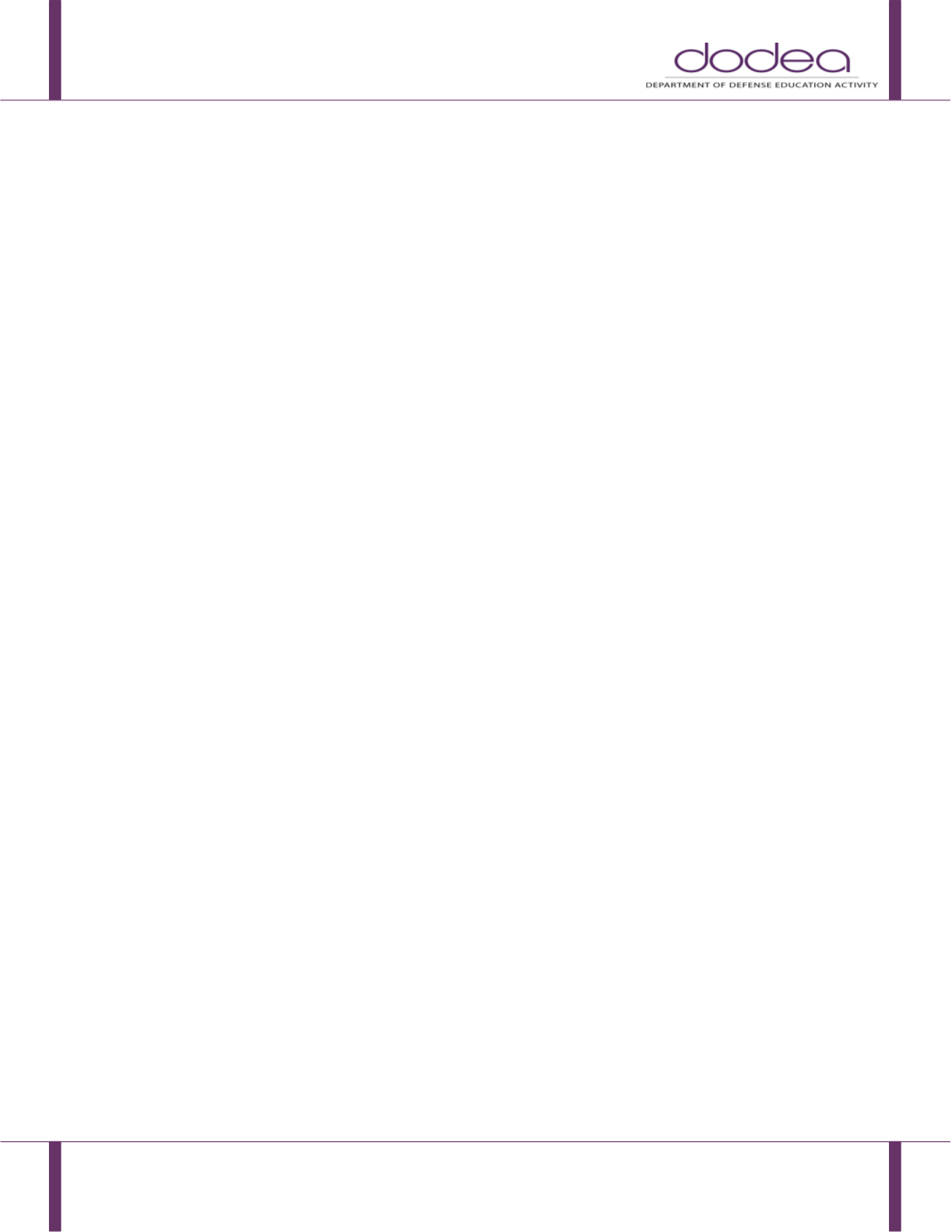

1342.12 Companion
July 12, 2017
Page 46
Autism Spectrum Disorder Eligibility Guide
A developmental disability significantly affecting verbal and nonverbal communication and social
interaction that adversely affects a student’s educational performance. Other characteristics often
associated with autism are engagement in repetitive activities and stereotyped movements, resistance
to environmental change or change in daily routines, and unusual responses to sensory experiences.
Essential features are typically but not necessarily manifested before age 3. Autism may include autism
spectrum disorders such as but not limited to autistic disorder; pervasive developmental disorder not
otherwise specified; and Asperger’s syndrome. The term does not apply if a student’s educational
performance is adversely affected primarily because the student has an emotional disturbance.
Required Assessments
Observation; Review of existing school educational and health records; educational impact analysis.
The CSC must gather the necessary information to meet the eligibility criteria.
Recommended Assessments to assist the CSC to meet eligibility criteria
Formal and/or informal measures of academic achievement supported by teacher reports, group
achievement test scores, report cards, etc. After review of all records, the CSC determines if there is a
need to obtain additional assessments (e.g. medical, developmental history, cognitive, language).
Criteria
There is documentation of an Autism Spectrum Disorder. Autism Spectrum Disorder may include the
following characteristics across multiple contexts:
Impairments in social interaction, such as marked impairment in the use of multiple nonverbal
behaviors such as eye-to-eye gaze, facial expression, body postures, and gestures to regulate
social interaction; failure to develop peer relationships appropriate to developmental level (i.e.,
such as greeting and sharing information in a manner that is appropriate for the social context);
a lack of spontaneous seeking to share enjoyment, interests, or achievements with other people
(i.e., by a lack of showing, bringing, or pointing out objects of interest); or lack of social or
emotional reciprocity are noted (i.e. abnormal social approach and failure of normal back and
forth conversation);
Restricted, repetitive and stereotyped patterns of behavior, interests, and activities such as
encompassing preoccupation with one or more stereotyped and restricted patterns of interest
that is abnormal either in intensity or focus, apparently inflexible adherence to specific,
nonfunctional routines or rituals, (i.e., difficulties adjusting behavior to suit various social
contexts), stereotyped and repetitive motor mannerisms, persistent preoccupation with parts of
objects.
Impairments in communication, such as delay in, or total lack of, the development of spoken
language (not accompanied by an attempt to compensate through alternative modes of
communication such as gesture or mime). In individuals with adequate speech, marked
impairment in the ability to initiate or sustain a conversation with others, stated, stereotyped
and repetitive use of language or idiosyncratic language (i.e., difficulties with understanding
what is not explicitly stated, utilizing communication for social purposes, changing
communication to match situational context, or following conversational rules), or lack of
varied, spontaneous make-believe play or social imitative play appropriate to developmental
level is noted.


















